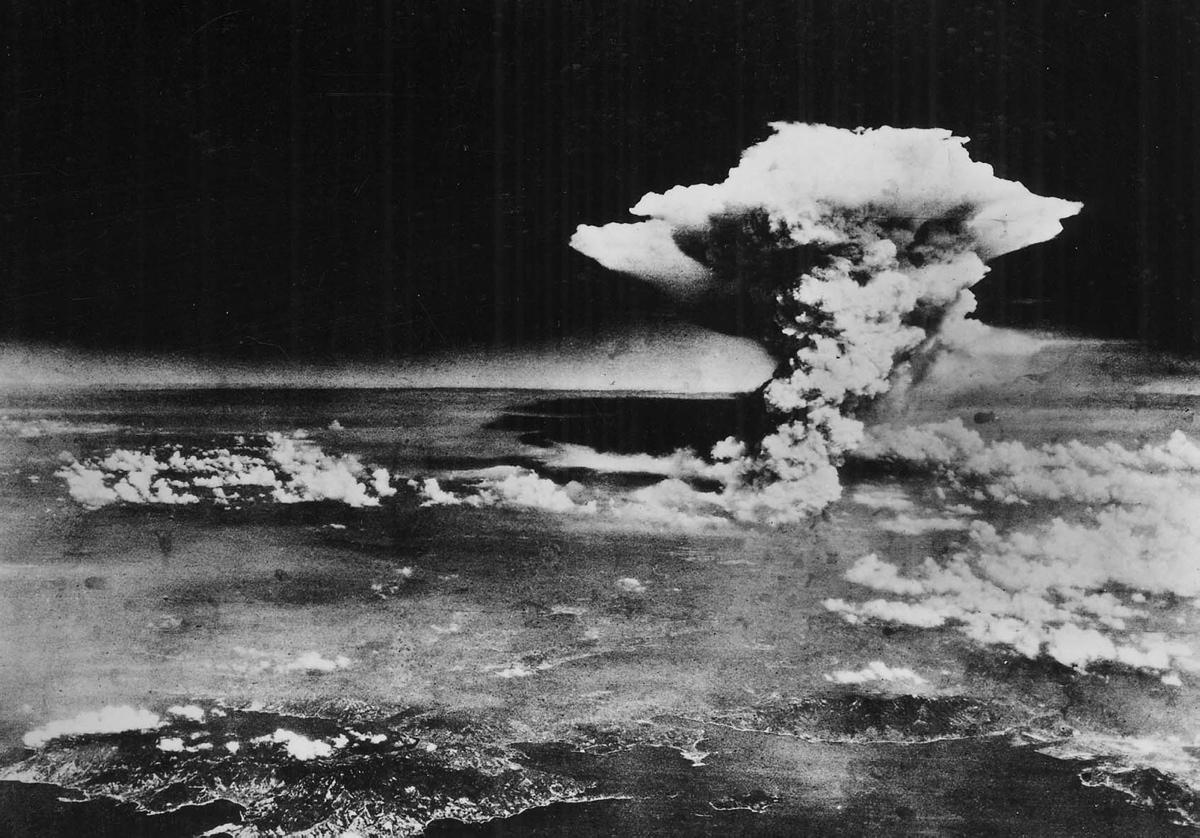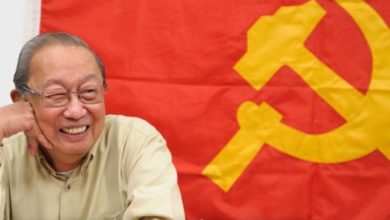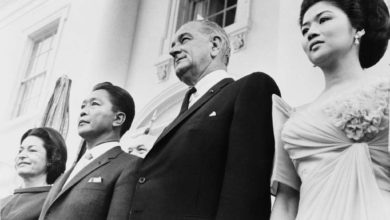This statement was drafted by the Political Secretariat of the Alliance for Just and Lasting Peace in the Philippines-USA. The AJLPP is a member group of the U.S. anti-war ANSWER Coalition (Act Now to Stop War and End Racism).
The revolutionary forces in the Philippines, led by the Communist Party of the Philippines, have urged its armed forces—the New People’s Army—to continue and further intensify the nationally coordinated tactical offensives started in the middle of September last year.
The CPP has characterized the current situation as almost the same as the political situation before Marcos declared
 |
The March 29 edition of the CPP’s official paper, Ang Bayan—Tagalog for “The People”—ran a CPP statement reading, in part: “The expansion of the revolutionary mass base has allowed us to undertake major steps to seize the initiative in fighting the enemy. We have been able to direct the commands at the levels of the guerrilla front, province and region to undertake politico-military work seriously, shake off conservatism and the roving rebel tendency or mentality, and deliver lethal blows to the enemy forces.”
The CPP continued, “We have been able to prove that our revolutionary strategy and tactics, and the unity of the NPA with the people through the organized mass base, can defeat the enemy military and police forces despite their far larger size, more resources, more training and latest gadgetry from the imperialists.
“The NPA has become stronger by intensifying armed struggle, carrying out land reform on a wider scale and building a stronger mass base,” the CPP said. “It has determined to advance from one phase to another in the protracted people’s war along the general line of new democratic revolution against U.S. imperialism and the local exploiting classes. We look forward to the complete victory of the people’s democratic revolution and the advent of socialist revolution in the long march to communism.”
The statement also said, “Let us accelerate the momentum of our tactical offensives. These are the best possible response of the people and the revolutionary forces to the escalation of state terrorism and the emergence of fascist dictatorship. We must fight to hasten the ouster of the Arroyo regime and strengthen the revolutionary movement. Our plan is to enter and develop fully the middle phase of the strategic defensive in the people’s war.”
Developing the middle phase, accumulating victories
Nationally-coordinated tactical offensives to seize the initiative from the enemy forces, to accelerate the seizure of arms and thus the expansion of the NPA, and to hasten the downfall of the Arroyo regime soared since the last half of 2005 to the middle of 2006.
The island of Mindanao and the guerilla fronts in Luzon and the Visayas increased their tempo of tactical offensives. On the basis of experience and strength, the nationwide tactical offensives continue vigorously and have moved up to a new and higher level.
In the years 2002-04, the people and the revolutionary forces went through difficulties in guerrilla fronts where the enemy forces concentrated under “Oplan Bantay Laya (Guard Freedom)”—a military campaign by the Armed Forces of the Philippines to destroy the NPA and other leftist groups.
But even in these guerrilla fronts, they started to counter the attacks of the enemy. From the latter part of 2004-05, the number of guerrilla fronts stabilized above the level of 120. Since then, these have increased. The objective of “Oplan Bantay Laya”—to destroy some 10 to 15 guerrilla fronts at a given time and move on—has utterly failed.
The intensified contradictions among the reactionaries help the NPA to intensify its nationwide tactical offensives. The Arroyo regime is drawing military and police forces to the national capital region in order to preempt and counter the prospect of being overthrown by a people’s uprising cum withdrawal of military and police support, impeachment and trial by the legislature or by a coup d’état.
Philippine government scuttled peace process
The Arroyo puppet regime has maliciously adopted the U.S. slogan of “war on terror.” It has adopted and carried out “Oplan Bantay Laya” in order to unleash campaigns of suppression against the peasant masses and guerrilla fronts in order to serve the interests of local landlords and foreign corporations.
Their bloody record as of the moment was 757 killed and 184 missing activists since Arroyo came into power in 2001.
 |
In line with this plan, the Philippine government unceremoniously terminated the peace talks with the National Democratic Front by “indefinitely suspending the peace negotiations” in Oslo Norway since July 2002. It successfully urged the U.S. government to label NDF consultant Prof. Jose Maria Sison, the CPP and the NPA “as terrorist.”
The Philippine government has scrapped the Joint Security and Immunity Guarantees by listing all the 57 NDF peace consultants, those who are involved in the peace process in the Philippines, and those who are exiled abroad for “ arrest and detention” when Arroyo declared the “state of emergency” last February 2006.
More than 200 persons are now detained; the most prominent is Anakpawis representative and union leader of the KMU, Crispin Beltran, who is now in his eighth month of detention in a government hospital.
Oplan Bantay Laya
In 2002, the regime formally launched “Oplan Bantay Laya,” patterned after “Lambat Bitag (Trap Net).”
“Lambat Bitag” was in place from 1987-92 to concentrate enemy military forces on selected areas or guerrilla fronts for a strategic war of quick decision and deployment of platoon-size special operations teams for the purpose of gradual constriction against the NPA through combat, psywar and intelligence.
Aside from deploying concentrated forces and special operations teams, “Oplan Bantay Laya” seeks to intimidate the people by using death squads to kidnap, torture and murder leaders and members of progressive mass organizations and party list groups, along with human rights activists, priests and pastors, teachers, lawyers and journalists, who are active in defending the interests of the people.
Like in Nicaragua and El Salvador and other Latin American countries during the Cold War era, the regime now is
 |
A major feature of “Oplan Bantay Laya” is the announced objective of destroying the suspected political infrastructure of the revolutionary movement. This is modeled after the Phoenix Program in the U.S. war of aggression in Vietnam. It was designed by no less than the Cabinet Oversight Committee for Internal Security under the direction of such long-time U.S. intelligence assets as Gen. Eduardo Ermita, national security adviser, the clerico-fascist, Norberto Gonzales and his mentor Fr. Archie Intengan, a Jesuit fascist.
Increased U.S. military aid
Since Sept. 11, 2001, the Arroyo regime has been under U.S. diktat to escalate military campaigns of suppression against the NPA and the people in accordance with the U.S. policy of “war on terror” and making the Philippines the “second front” of the so-called war.
Under the Visiting Forces Agreement, since 1998, the U.S. and the Philippine military forces have conducted 24 joint military exercises. The United States has trained the armed forces special units like the “light reaction units of the marines, scout rangers and the police,” but the officers and the trained units who were active during the offensive against the Abu-Sayyaf were “contaminated” by these “failed coups” and were eventually disbanded or were reorganized.
By February, the military has detained more than 150 military officials including two generals. It has disbanded the special units that these officers commanded. Earlier in 2003, more than 200 officers were detained due to the failed Oakwood Mutiny in Makati City.
Now under the VFA, the United States is slated to train 12 new battalions to be redeployed in Mindanao like what it did in El Salvador when it was fighting against the FMLN.
Formerly, the Joint U.S. Military Advisory Groups trained officers and cadres of the armed units until it was scrapped in 1992 when the Philippine Senate scrapped the U.S.-RP Military Bases Agreement in Sept. 16, 1992.
U.S. forces continue to be ever present at the military operations against the revolutionary forces in the Philippines under the guise of supporting the Philippine military operations against the “Muslim extremists” in Mindanao. On the island of Sulu, more than 6,000 AFP troops are conducting operations supported by U.S. special forces.
The U.S.-Arroyo regime isolated
During the last half of 2005 until Arroyo proclaimed her “emergency rule” in February 2006, the broad united front of
 |
But the regime has reacted by usurping martial law powers under the guise of Proclamation 1017, declaring a state of national emergency. It has used brute force to disperse mass actions, arrest progressive leaders without judicial warrant, raid newspaper offices and threaten to take over enterprises owned by anti-Arroyo businessmen.
The internal strife within the ruling class is getting more violent than ever before.
The reactionaries in power have become more corrupt and repressive. The reactionaries out of power are quicker to expose the wrongdoings of those in power. The Arroyo ruling clique has become isolated among the reactionaries because it has scandalously used public funds to buy votes and bribe the electoral and military officials to rig the elections.
An increasing number of opposition parties are trying to ride the groundswell of popular hatred for the Arroyo regime over a wide range of economic, social and political issues.
The ruling coalition parties, called Lakas-CMD, is becoming shaky with the disengagement of Liberal Party and other parties. Even within the Arroyo cabinet, a considerable number of cabinet members and other high officials have resigned since middle of last year. The Philippine Senate has become part of the opposition.
Aware that the anti-Arroyo currents within the armed forces and police are becoming stronger than ever, the revolutionary movement is intensifying its propaganda and organizational work within the armed forces. But these currents are being pent up and anti-Arroyo groups are considering how to fight back.
Most groups continue to bide their time and wait for the occasion to withdraw support from the regime. Other groups are considering military strikes to demonstrate the inability of the regime to rule or to capture the usurper of presidential authority through electoral fraud or stage a coup against it.
Aside from the anti-Arroyo groups in the military and police, there are fringe armed groups in Mindanao, Visayas and Luzon that similarly wish to undertake sabotage actions against the installations and facilities of the Arroyo regime and their foreign and local corporate supporters.
The revolutionary movement has admonished all armed groups opposed to the Arroyo regime not to undertake military actions that harm solely or mainly the civilian population or the environment. Otherwise, they cannot be regarded as acting in the interest of the people.
The most striking new development in the reactionary armed forces is that some military and police officers have expressed their desire for truce, alliance and cooperation with the revolutionary movement against the regime. And the NPA has welcomed their good intentions.
It is also expected that among the military and police personnel they can undertake their own open democratic movement to defend and promote their rights and legitimate interests against the rotten ruling system.
The military and police has been polarized into those who are for and who are against Arroyo. The officers are divided into at least five groups: the pro-U.S. and pro-Arroyo officers, two pro-U.S. but anti-Arroyo groups of officers—Coalition of National Salvation, headed by former defense secretary Fortunato Abat and YES-ARMS, headed by retired Commodore Aparri. Two relatively patriotic and progressive anti-Arroyo groups of officers also exist—Para sa Bayan/YOU New Generation and Katipunan ng mga Anak ng Bayan/Makabayang Kawal Pilipino.
There are more anti-Arroyo groups among the military and police forces. They proliferate in order to foil counterintelligence efforts of the regime.
The most significant development in the political ferment now is the emergence of anti-Arroyo groups of military and police officers willing to enter into truce, alliance and cooperation with the revolutionary movement in order to fight the Arroyo regime, and move towards the establishment of a patriotic and democratic government under the principle of civilian supremacy.
They repudiate the reactionary military tradition of servility to the United States and the local exploiting classes.
‘Oust the U.S.-Arroyo regime’
The March 29 CPP statement called for the ouster of the U.S.-Arroyo regime in the Philippines:
“The Filipino people are confronted today by the evil Arroyo regime. This regime has usurped power by electoral fraud and is hell-bent on clinging on to power by the foulest of means. It is utterly servile to U.S. imperialism and carries the worst characteristics of the local exploiting classes of big compradors and landlords. It knows no bounds for its corruption, brutality, deceptiveness and mendacity. It seeks to destroy the revolutionary movement in the vain hope of eliminating all forms of resistance to oppression and exploitation.”
The CPP statement continued, “In order to keep itself in power and to expand its powers, the Arroyo regime seeks to break up the broad united front against it by trying to destroy the legal and patriotic and progressive forces. It also expects to debilitate the armed revolutionary movement by destroying the legal patriotic and progressive forces. Arroyo and her Cabinet Oversight Committee or cluster in charge of Internal Security are claiming to have gotten from the U.S. the license to kill communists and patriots in the name of anti-terrorism in order to cancel the 2007 mid-term elections, prevent the legal opposition parties from winning and impeaching Arroyo and clear the way for charter change, the amendment of the 1987 constitution in a way mutually most desired by the Arroyo regime and the U.S. imperialists.
“The Arroyo regime is set to get the same autocratic powers that Marcos got from the 1973 constitution in the sham transition from the presidential to the parliamentary form of government.
“It also intends to dilute the clear guarantees drawn from the Miranda doctrine and delete the restraints on the exercise of martial law powers. In exchange, the United States and other foreign monopoly corporations can have unlimited ownership and control of land, natural resources, public utilities and all businesses. The U.S. military forces can also keep military bases, combat troops and nuclear weapons in Philippine territory.
“The Arroyo regime is a traitor regime that is always begging to be propped up by the United States. It does not learn lessons from the rise and fall of the Marcos fascist regime. For a while, Marcos could benefit from U.S. support while giving in to U.S. dictates. But in the end, the United States would give him up when the broad united front of anti-fascist forces and the mass movement reached a certain high level.”





